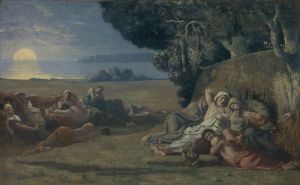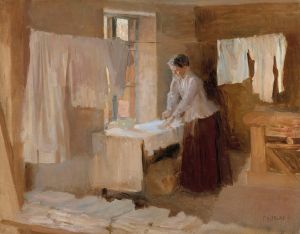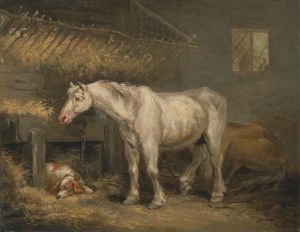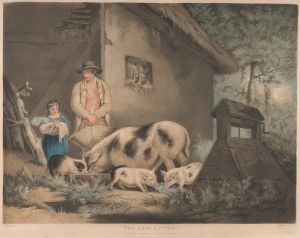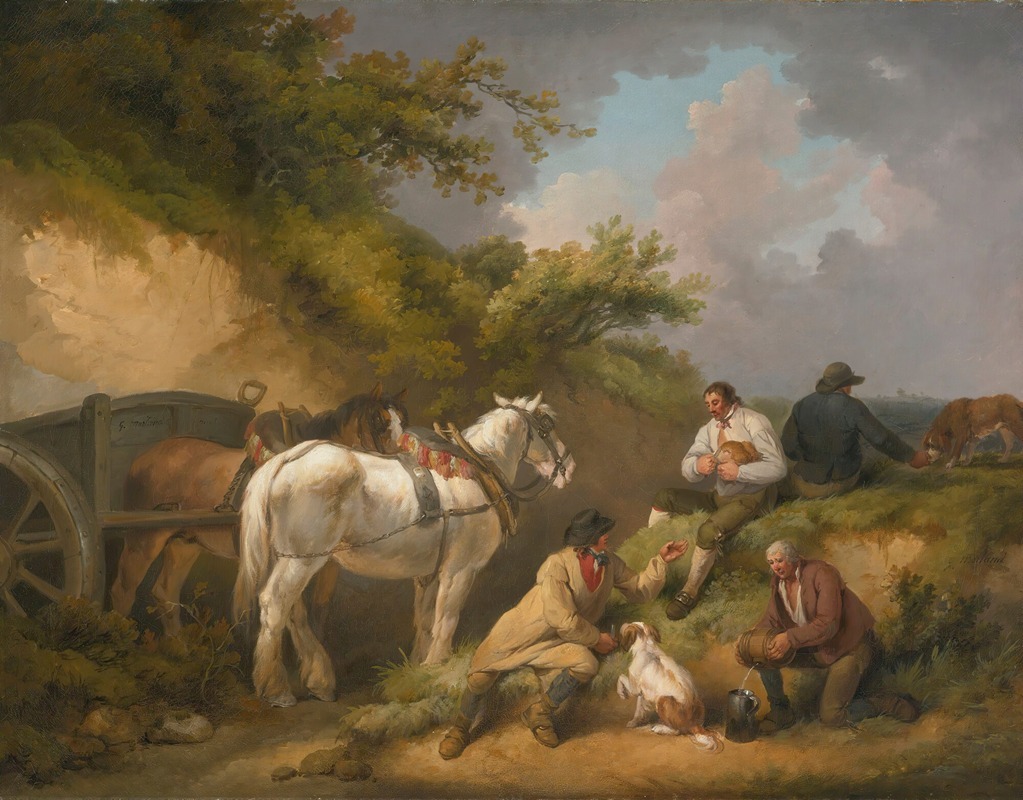
The labourer’s rest
A hand-painted replica of George Morland’s masterpiece The labourer’s rest, meticulously crafted by professional artists to capture the true essence of the original. Each piece is created with museum-quality canvas and rare mineral pigments, carefully painted by experienced artists with delicate brushstrokes and rich, layered colors to perfectly recreate the texture of the original artwork. Unlike machine-printed reproductions, this hand-painted version brings the painting to life, infused with the artist’s emotions and skill in every stroke. Whether for personal collection or home decoration, it instantly elevates the artistic atmosphere of any space.
George Morland was an English painter renowned for his rustic and rural scenes, often depicting the everyday life of common people and animals in the late 18th and early 19th centuries. One of his notable works is "The Labourer's Rest," which exemplifies his ability to capture the simplicity and tranquility of rural life.
"The Labourer's Rest" is a painting that reflects Morland's keen interest in the lives of ordinary people, particularly those who worked the land. The painting typically features a laborer taking a moment of respite, surrounded by elements of the countryside. Morland's works are characterized by their attention to detail and the use of light and shadow to create a sense of depth and realism. In "The Labourer's Rest," these techniques are employed to evoke a peaceful and contemplative mood, inviting viewers to appreciate the quiet dignity of rural labor.
Morland's style is often associated with the Romantic movement, which emphasized emotion and individualism, as well as a glorification of the past and nature. His paintings frequently include animals, such as horses and dogs, which are depicted with a sense of affection and understanding. This connection to nature and the pastoral lifestyle is a recurring theme in Morland's work, and "The Labourer's Rest" is no exception.
The artist's ability to portray the nuances of rural life can be attributed to his own experiences and observations. Morland was known to immerse himself in the environments he painted, often living among the people he depicted. This firsthand experience allowed him to capture the authenticity and essence of rural life, which resonated with audiences of his time and continues to do so today.
George Morland's career was marked by both success and personal struggles. Despite his talent and popularity, he faced financial difficulties and personal challenges, including issues with alcohol. These struggles, however, did not diminish the impact of his work. Morland's paintings, including "The Labourer's Rest," remain appreciated for their artistic merit and their portrayal of a bygone era.
"The Labourer's Rest" is a testament to Morland's skill in capturing the beauty and simplicity of rural life. His work provides insight into the social and cultural landscape of 18th-century England, offering a glimpse into the lives of those who lived and worked in the countryside. Through his art, Morland invites viewers to pause and reflect on the quiet moments of life, celebrating the resilience and spirit of the laboring class.
In summary, "The Labourer's Rest" by George Morland is a significant work that highlights the artist's ability to depict rural life with authenticity and empathy. The painting stands as a representation of Morland's broader oeuvre, which continues to be celebrated for its contribution to the Romantic movement and its enduring appeal to audiences interested in the pastoral and the picturesque.





